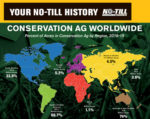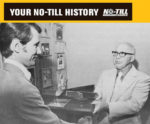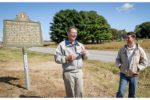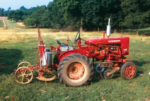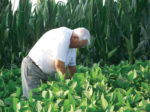Advertise Follow Us
Items Tagged with 'Harry Young'
ARTICLES
Your No-Till History
John Young, son of first commercial U.S. no-tiller Harry Young, evaluates no-till’s past, present & future.
Read More
No-Till’s Herbicide History, Part I
No-till was a ‘no-go’ until modern weed-control chemicals arrived on the scene.
Read More
University Researchers Battle Over No-Till ‘Fad’
Late Allis-Chalmers’ marketing exec recalls the opposition no-till faced as its champions tried to gain ground in the practice’s adoption.
Read More
What Research & Literature Most Contributed to No-Till’s Adoption?
This first-ever project recognizes the most significant works in no-till research & literature, and the efforts of those who contributed to the practice’s understanding in North America and beyond.
Read More
No-Till’s First Field
It’s only 7/10ths of an acre separated by a drainage ditch from the rest of a 180-acre field, but it’s been continuously no-tilled for 60 years.
Read More
What I've Learned from No-Tilling
No-Till’s First Curious Neighbor
For Malcolm Oatts, 4 decades of protecting his farm’s topsoil has rewarded him with more fertile fields and higher yields.
Read More



